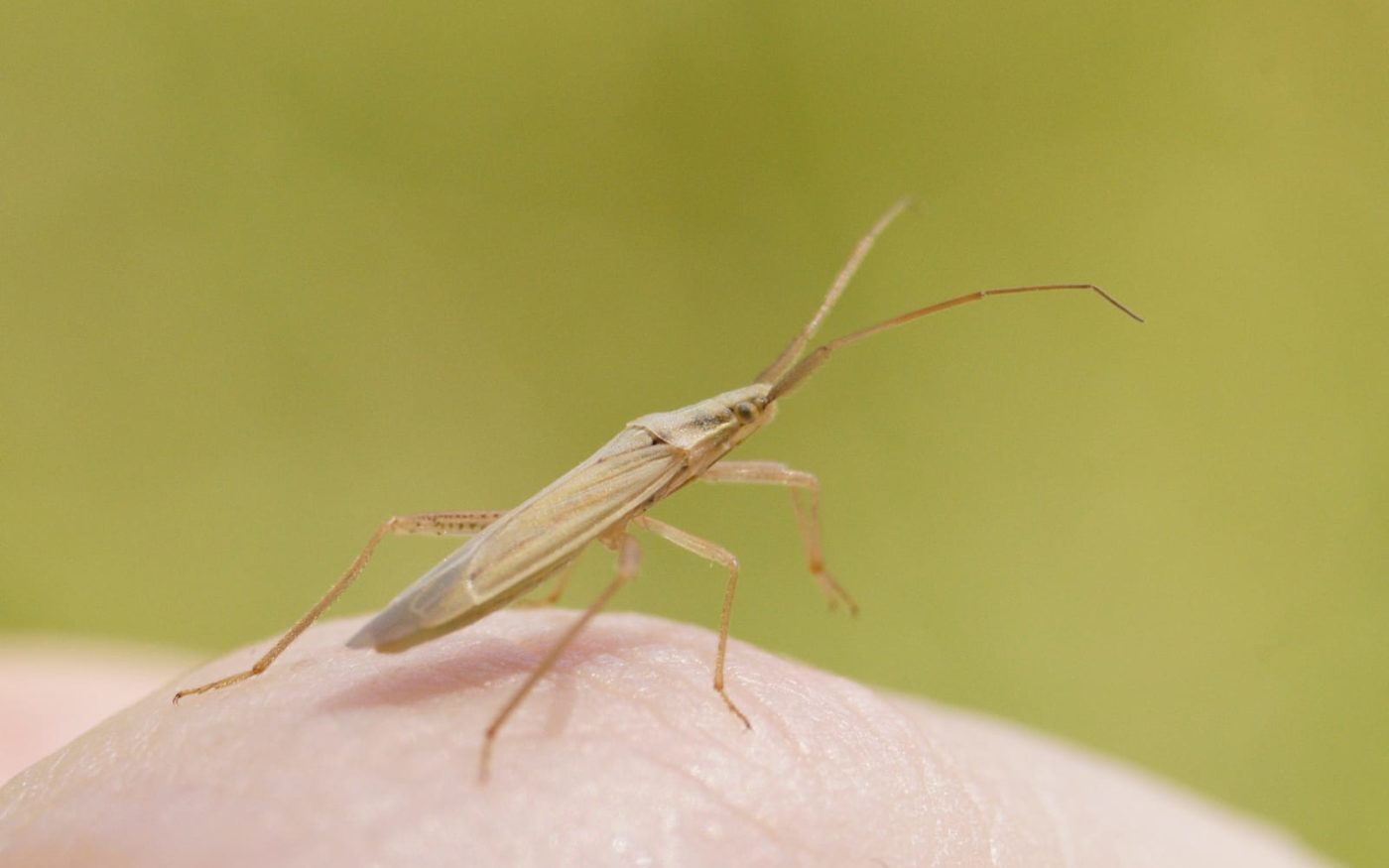Order
True bugs
Family
Miridae
Within the suborder Heteroptera, the Miridae family has the greatest number of species, containing over 10,000 around the world. A large proportion of species within this family are agricultural pests that pierce plant tissue and will occasionally transmit viral plant diseases.
What do they look like?
The grass bug is one of the larger species in the Miridae family. They are 8-10mm in length, and often change colour throughout the year. In the late summer they are yellowish-brown in colour, similar to the colour of dead grass. In the autumn, they slowly turn a darker brown as they overwinter. In spring they change to green, which helps them to blend with the fresh grass. These bugs have long, thin bodies with spindly legs, their eyes are small, round and located directly below their long antenna, which have thick first segments and then become thinner.
Where do they live?
As the name suggests, grass bugs live in grassy habitats, as they feed on the unripe grains of a range of grasses. This species is more commonly found in damper habitats compared to similar species. They may also be found in gardens.
Where can they be found?
They are common throughout Britain.
When can you see them?
Grass bugs can be seen all year round, although they will be found in different colour forms depending on the time of year.
Life cycle
This species overwinters as an adult in the dark brown form. In the spring, they start to mate and turn greener. The females lay their eggs, the nymphs hatch, and begin to feed on the unripe grains of grass and occasionally on the juices of leaves and stems. Nymphs can be found from May to July and then mature into adults from late July onwards. They become more straw-coloured during this period, darkening as they start to overwinter.
What do they do?
Grass bugs help to serve as an important food source for a variety of small mammals such as shrews, and birds like song thrushes and yellowhammers.
Did you know?
Grass bugs (and all true bugs) have a large proboscis (similar to a big straw attached to their face) that they hide under their body. The grass bug sticks this into the unripe grains of grass to feed.

